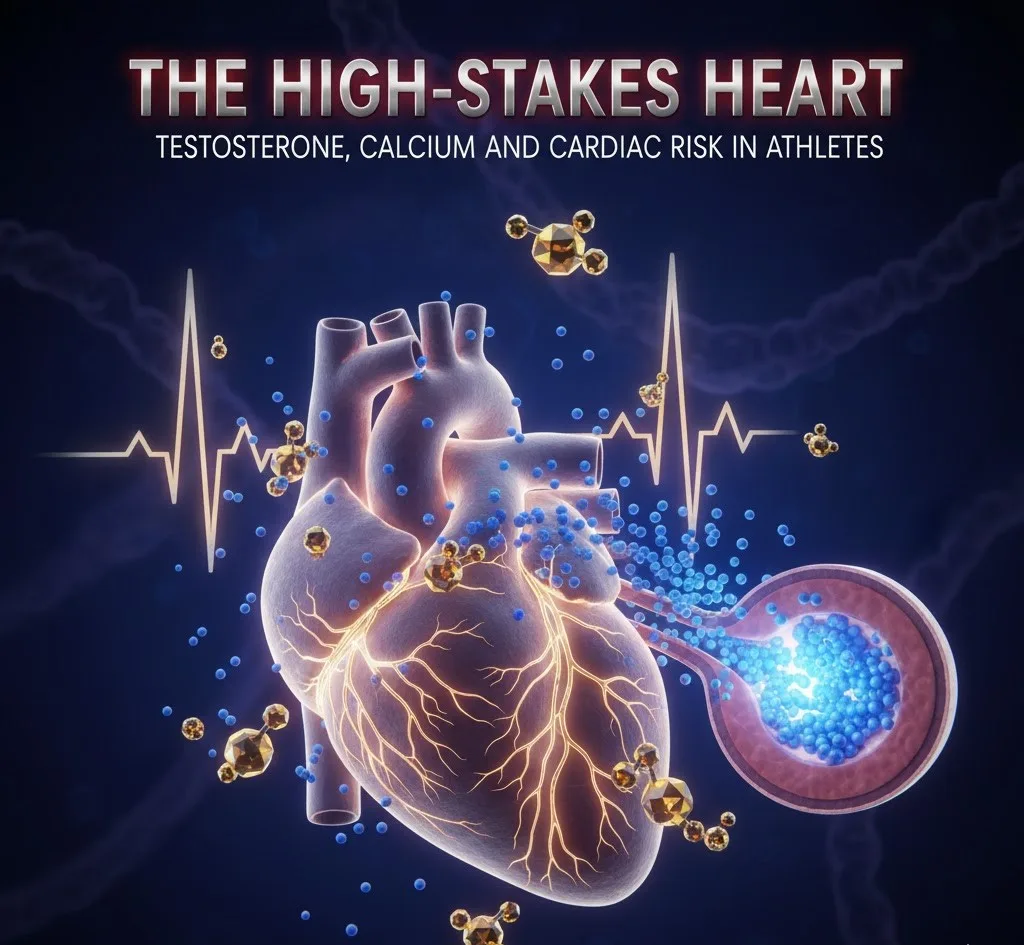The pursuit of peak physical performance often drives athletes to optimize every biological factor, including hormone levels. While testosterone is crucial for building muscle mass, enhancing strength, and improving recovery, its impact on the cardiovascular system—particularly the delicate electrical activity of the heart—presents a complex and serious health consideration, especially when levels become supraphysiological (above natural limits).
The Cellular Mechanism: Calcium Overload and Arrhythmia
At the molecular level, testosterone can significantly influence the heart's function through its effects on calcium (Ca^2+) handling within the myocardium (heart muscle).
- Increased Calcium Influx: Testosterone, particularly at high concentrations, can interact with protein receptors on the cardiac cell membrane, leading to an increase in the flow of calcium ions into the cell. Research suggests it may activate certain calcium channels (like the L-type (Ca^2+) channel) or re-introduce others (like the T-type (Ca^2+) channel) that are typically quiescent in a healthy adult heart.
-
Intracellular Overload: This increased influx results in an excessive accumulation of calcium inside the cardiac muscle cell. Since calcium is the primary signal for muscle contraction, this excess can disrupt the cell's carefully balanced electrical cycle.
-
Susceptibility to Arrhythmia: This state of calcium overload is a well-known mechanism for increasing the excitability and instability of the heart muscle cells. It can interfere with the timing of depolarization and repolarization, making the heart susceptible to cardiac arrhythmia (irregular heartbeat). This is a critical pathway that may lead to more severe events like ventricular fibrillation or sudden cardiac death.
Relating the Risk to Sport and Athletic Abuse
The primary concern linking this mechanism to athletes arises from the illicit use of Anabolic-Androgenic Steroids (AASs), which are often synthetic forms of testosterone or its derivatives, taken in supraphysiological doses to enhance physique and performance.
1. Supraphysiological Doses
Unlike medically monitored Testosterone Replacement Therapy (TRT) for men with clinical deficiencies (which generally aims to restore levels to the normal range), the doses abused by athletes seeking rapid gains are often 10 to 100 times higher than physiological levels. This massive hormonal spike pushes the cardiac calcium handling mechanism far beyond its normal capacity, significantly amplifying the risk of (Ca^2+) overload and subsequent electrical instability.
2. Structural Heart Damage
Chronic AAS abuse also contributes to adverse cardiac remodeling and cardiomyopathy (disease of the heart muscle).
-
Myocardial Hypertrophy: High testosterone levels can lead to the pathological thickening of the heart walls (especially the left ventricle). While athletes naturally develop 'athlete's heart' (a healthy, adaptive thickening), AAS-induced hypertrophy is often disproportionate and associated with fibrosis (scarring), which further disrupts the heart's electrical pathways and increases arrhythmia risk.
-
Atherosclerosis and Thrombosis: AAS abuse is known to negatively impact cholesterol profiles (lowering beneficial HDL and raising harmful LDL) and increase the risk of blood clots (thrombosis). These effects combine to increase the risk of a heart attack ($\text{myocardial}$ infarction), which itself is a major precursor to deadly arrhythmias.
3. The Unpredictable Heart
The combination of electrical instability from calcium dysregulation and structural damage from chronic high-dose use creates a particularly dangerous scenario. Even young, seemingly healthy athletes with "clean" blood work (after a cycle) may have already caused irreversible damage to their heart's electrical and structural integrity.
In the high-intensity environment of competitive sports, where the heart is subjected to extreme stress and high adrenaline levels, any underlying cardiac electrical vulnerability—whether from high endogenous levels or, more critically, from exogenous abuse—can be fatally triggered.
The evidence suggests that while testosterone is a fundamental hormone, its abuse creates a direct toxic environment for the heart, largely through the mechanism of intracellular calcium overload, turning a pursuit of peak physical form into a high-stakes gamble with cardiac health.

